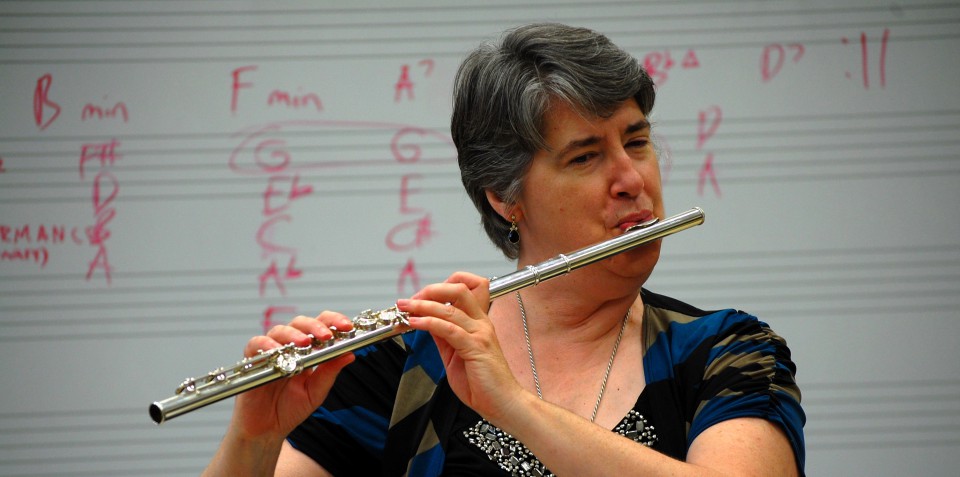Tags
Anyone who works with beginning flute players recognizes the obstacles and hurdles they have to overcome in order to learn to play. Perhaps you, yourself have experienced these issues when studying flute in methods class in college. These include breath control and the related huffing and puffing, along with not tonguing.
Let’s look at the breath control/huffing and puffing problem. This is primarily an issue involving how the student is shaping the aperture. The larger the aperture, the windier the sound and the more trouble the student will have with sustaining the air stream. They will also have trouble with changing octaves. The trick is to help the kids discover how to blow through a smaller aperture, sooner rather than later. When they learn to shape a smaller aperture, it is much easier to help them learn to sustain their air, even while tonguing. Here are several ways you can help them demonstrate to themselves how to shape the aperture:
 Get some open, but flat coffee stirrers and give each kid one. Have them put it between their lips, either in the middle or off to the left (for kids who have a teardrop top lip) and blow. Have them blow on the straw and tongue as well.
Get some open, but flat coffee stirrers and give each kid one. Have them put it between their lips, either in the middle or off to the left (for kids who have a teardrop top lip) and blow. Have them blow on the straw and tongue as well.- Show them the opening of an oboe reed. It’s about the same size as a useful flute aperture. The aperture should be roughly oval in shape with the opening about the same size as an oboe reed.
- Have them practice playing pretend flute on their index finger, shaping a small aperture. They can then move the other fingers back and forth across the air stream. A good, strong air stream will feel focused and the temperature will feel cooler if the air is moving at the correct speed.
A related and all too common problem for young flute players in band is using a hoo articulation rather than actually tonguing. Do you know that I have judged solo and ensemble contest and heard kids who have been playing two to four years and are STILL not tonguing? This is completely unacceptable and when I judge contest, I judge accordingly. I can understand having this problem for 1-3 months after starting, but you, as the teacher really must insist they learn to tongue. I don’t have to tell you kids will take a pass on necessary skills if you don’t monitor them closely.
Tonguing correctly has a lot to do with having the proper size aperture. If the aperture is too large, tonguing behind the teeth is quite difficult. Try tonguing where your teeth meet your gums through an oversize aperture and then through a small aperture. You will see that tonguing is easy if the size of the aperture is correct. It’s almost impossible through a larger aperture. So if you help your students develop the correct size aperture, you will soon have everyone tonguing in short order. Insist that the kids tongue and you will see the quality of the sound your beginner flutes make improves exponentially.
If you find these entries useful, please subscribe, share with your colleagues and come back regularly for more flute tips. Feel free to comment. If you have a topic you would like to see explored more fully, you can contact me privately on Facebook or email me at dr_cate@sbcglobal.net. For information about clinics and workshops click here.

Hey, Cate! I often find that the aperture and tonguing go together as well. Each seems to help the other. It is hard to get a small aperture when “hooting” as each “hoo” has a wide open set of lips in between because the students are breathing with each “hoo”. Tonguing allows the student to narrow the aperture because they are not breathing in between each articulation. I insist on more than one tongue per breath and usually ask for four! Most of this problem goes back to before the flute was even put together, and as you point out, learn to focus the air and tongue, especially on the headjoint doing long tones and multiple tongues in one breath. I usually look to have the students able to change pitches on the headjoint while keeping the hand covering the end. Changing pitches means they have a small enough aperture that their first tones on the actual flute will be even better, and they are already on a path to choosing octaves via air direction.
LikeLiked by 1 person